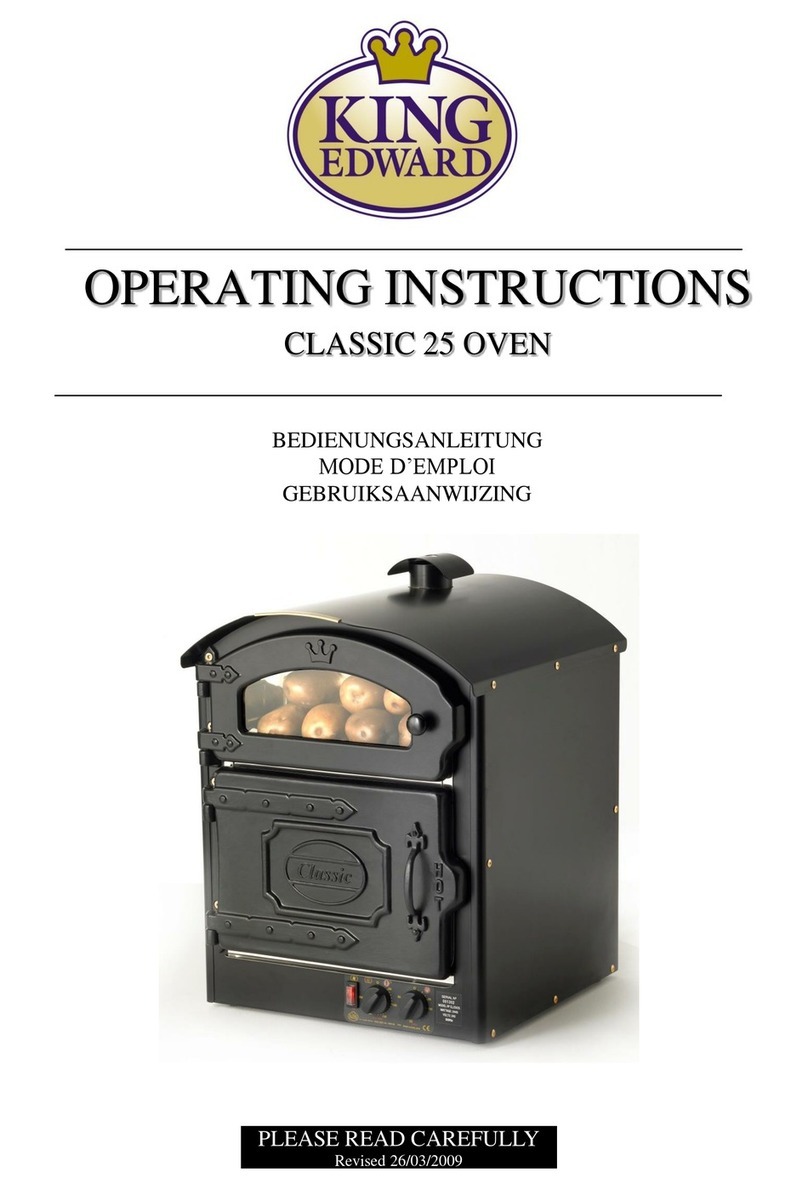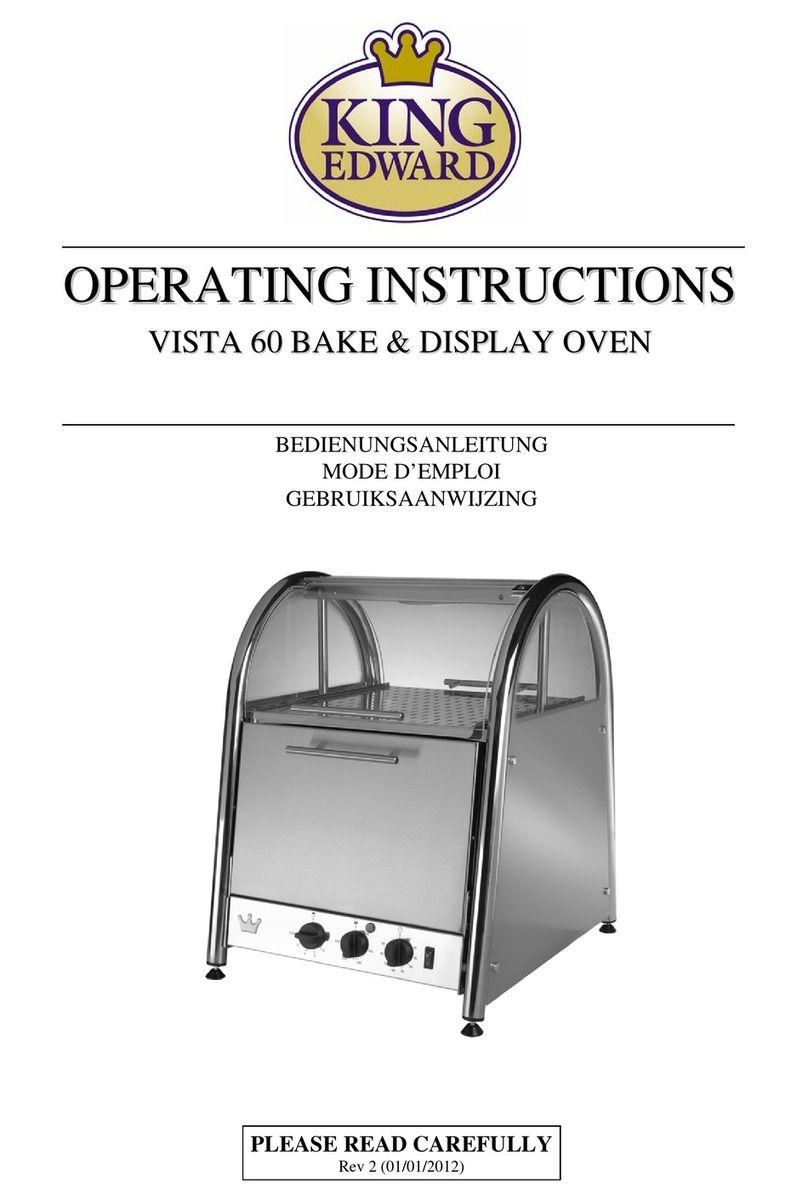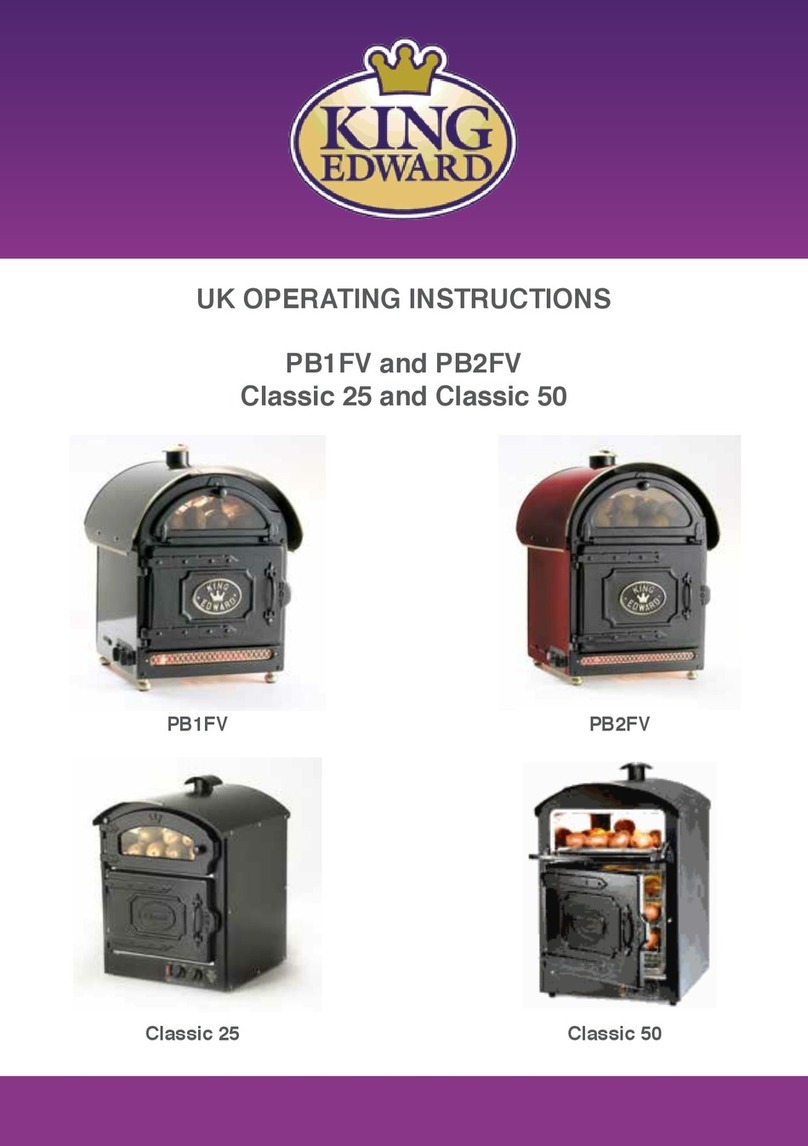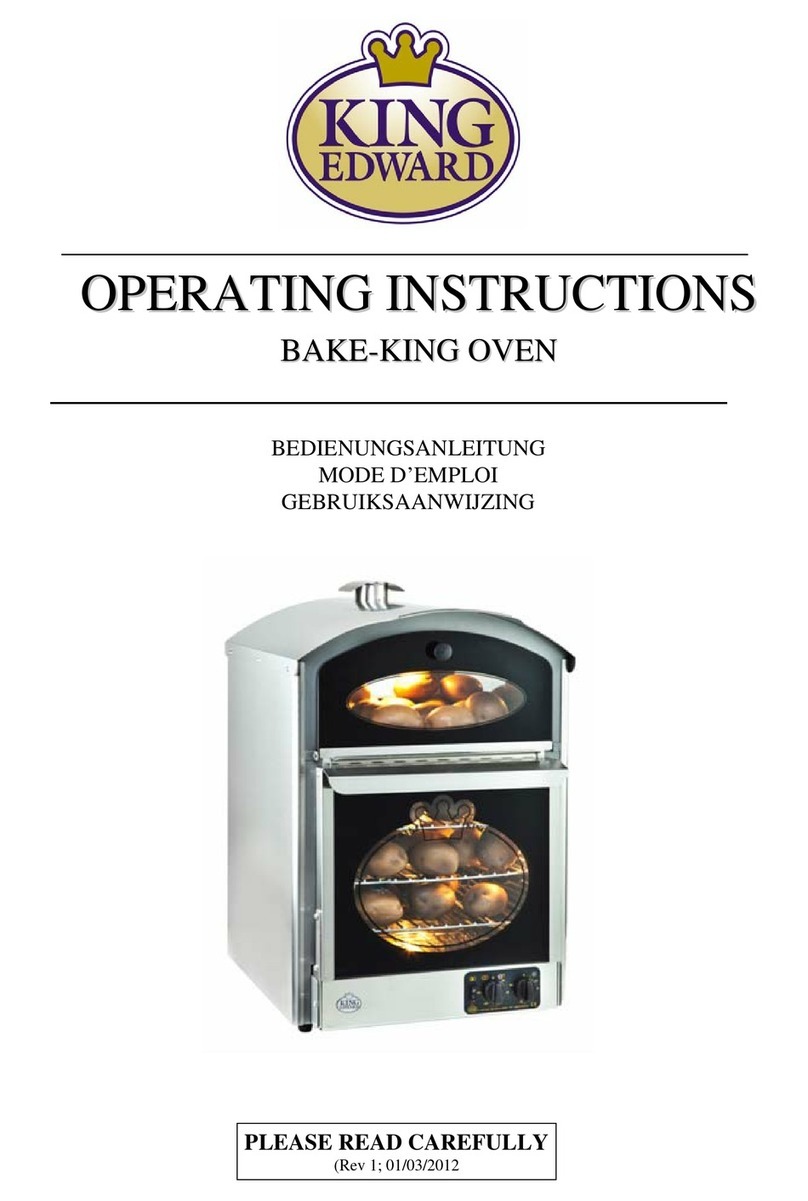
INSTALLATION INSTRUCTIONS
INSTALLATION INSTRUCTIONS
We recommend that wherever possible, the Classic 50 potato baker is sited near adequate extraction /
ventilation to assist with the disposal of steam.
The exterior of this appliance will get hot during operation. Suitable precautions must be taken.
Make sure that the mains flex cannot come into contact with hot surfaces and that it is adjusted to the
required length by a qualified person upon installation. Do not push excess flex under the baker.
If the supply cord is damaged, it must be replaced by the Manufacturer, its Service Agent or Similarly
Qualified Persons in order to avoid a hazard.
Do not position the baker near to the edge of a counter enabling staff or customers to brush against it in
passing.
Position the baker so that the electrical socket can be reached easily in the event that the baker needs to
be disconnected from the electric supply.
OPERATING RECOMMENDATIONS
OPERATING RECOMMENDATIONS
The interior of this appliance will get very hot during operation. ALWAYS use an oven glove
(preferably one which covers the wrist and lower arm as well) when operating the baker or removing
potatoes from it.
Take particular care when opening the main oven door; the built-up steam and heat inside will escape as
soon as the door is opened and could cause injury if you are standing too close. Avoid opening the main
oven door unnecessarily as this will cause heat loss and lengthen the cooking time.
Handle baked potatoes carefully, occasionally they may burst in the oven or whilst being handled.
Do not turn the thermostat control up to its full setting, as this will invariably burn the outside of the
potatoes before the inside is cooked; moderate heat for longer is recommended.
All King Edward ovens MUST be operated by suitably trained staff. Under NO circumstances should
children come into contact with or operate this appliance.
Taking the trays out and positioning the potatoes before loading will enable you to gain the maximum
capacity from your baker.
This product may increase the ambient temperature.
Always use best practise and take all reasonable precaution to avoid accidents when using this oven.
INSTRUCTIONS FOR USE
INSTRUCTIONS FOR USE
Before using the oven, take out the wire trays and position the potatoes on them ready for loading.
Plug the oven in at the socket, turn on the ‘Fan on’ rocker switch in the control panel, this will turn the
fan motor on and also the display lights.
Turn the thermostat knob on the control panel to the temperature required for jackets we recommend
190 - 200°C. At this stage the neon light will come on to indicate that the oven is heating up.
When the thermostat neon goes out, the oven has reached temperature. You can then load the prepared
trays of potatoes. At this stage you may use the timer if you wish by setting it to the desired cooking
time. The red neon will then go off when the bell rings at the end of the cooking period. Please note -
the oven will not automatically turn off!
When cooked sufficiently, the potatoes will feel soft when gently squeezed. They can then be
transferred to the top display area and served when required. To maintain adequate storage temperature
in the top display area, the main oven must be left on at normal operating temperature (190 - 200°C).
If you intend to cook products other than potatoes, adjust the temperature and cooking times according
to the product’s cooking instructions - bearing in mind this is a fan assisted oven with reduced cooking
times.































